- Home
- Kevin Lucia
American Horror Cinema Page 3
American Horror Cinema Read online
Page 3
These are very broad ways that horror in general can provide “effective meditation on issues which affect society.” As we close, we’ll examine how postmodern horror can also deal with some of these societal issues, looking at what could be considered the “strengths” of a postmodern horror film.
In his essay “Knowing the Rules: Postmodernism and the Horror Film”, Andrew Syder refutes arguments that postmodern horror cinema is just an “imitation of dead styles” and a “new form of superficiality and depthlessness.” In other words, postmodern horror films are slick productions full of gore and violence and sex with little or no substance, produced for an MTV-fed, pop-culture obsessed generation (84). Instead of changing horror cinema from what it once was, Syder claims that postmodernism has instead made a more explicit connection between postmodernism concerns about absolute truths and the reality of the world around us, and the horror genre’s concerns of the world’s anxieties about the unknown (84).
In this case, Syder claims that postmodern films’ self-reflexivity and intertextual nature has re-framed the horror films' focus from the “rules of monsters” and “rules of the unknown” but to the “rules of the horror movie itself” (84). Which is a change or an evolution of sorts, because horror has always been based on rules. Rules that govern monsters – vampires can’t go out in daylight, drink blood and fear crosses; werewolves turn by the full moon and are killed by silver – and in those classic films, knowledge of those rules leads to destroying the monster.
But what exactly does “self-reflexivity” and “intertextual” mean? In brief, self-reflexivity is defined as: “marked by or making reference to its own artificiality or contrivance”. Intertextual means: “is the shaping of texts' meanings by other texts. It can include an author’s borrowing and transformation of a prior text or to a reader’s referencing of one text in reading another.”
In other words, postmodern horror cinema has developed directly from its long inheritance back to the 1930’s, and very often A. refers to itself and the fact that this is a movie, and is contrived and not real; B. is informed and shaped by all the other movies before it, often trying to either reshape a story that’s been told several times over, is patching together several different styles into one film (a pastiche) or is offering a humorous take on a subject treated in film many times over (parody).
One example of intertextuality: in Quentin Tarrentino’s From Dusk Till Dawn – a 1996 movie about a isolated desert bar run by vampires – the would-be victims don’t turn to a vampire “expert” or religious/mythic scholar (someone like VanHelsing, from Dracula) for advice on how to slay vampires. They instead muse amongst themselves how actor Peter Cushing would’ve done it in all those Hammer Horror movies of the seventies. Yes, these vampires are the same vampires we’ve seen before...but this is movie for a generation informed by movies. Not literature or myths or legends or religion. Another excellent example is the original version of Fright Night. The main protagonist Charlie doesn’t turn to a priest or scholar to defeat the vampire that’s moved in next door, he seeks aid from a retired horror movie actor who now hosts a horror movie television marathon every Friday night. Because movies have become the primary “text” of younger generations.
Intertextuality can be a subtle thing, however, probably present in far more movies than we realize. More explicit is self-reflexivity, when a horror movie openly reminds you – even within itself – that THIS is a horror movie. There are rules to observe. A game that must be played. And because our generation now sits upon a horror movie legacy stretching back almost eighty years, these RULES have now become our primary “texts” informing us/characters how to survive and “beat the monster”, rather than the “knowledge” featured in classic horror movies. Hence, horror movies have now become our “knowledge”. Dean Lockwood, Lecturer at the Lincoln School of Media says it best: “The contemporary horror film knows that you’ve seen it before; it knows you know what is about to happen, and it knows that you know it knows you know” (5).
The Scream trilogy stands as a perfect example of self-reflexivity, though many others exist (indeed, Buffy The Vampire Slayer is not only a triumph of “monstrifying teenage fears”, it’s also magnificently aware of pop culture). In fact, the Scream movies manage to do what so few postmodern horror movies have: avoiding both pastiche and parody, they treat horror movies as a text that informs them and the explicit rules for surviving a horror movie is what drives the narrative. Not legends or myths or absolute values like “good vs. evil”. One of the protagonists, Randy the horror movie nerd, constantly expounds upon all the “rules” of horror movies throughout the narrative. It constantly refers back to what it is, while still managing to trap us in its story.
Many critics have used this self-reflexivity as an excuse to accuse postmodern horror as nothing more than vehicles driven by retreads of old ideas, with the violence and gore ramped up for shock value. In other words: “we have nothing new to show you, so we’re going to retread the same old ideas, ramp up the gore, try to do something to attract crowds.” And indeed, more than one of the theorists I’ve quoted here – Carroll and Pinedo, in particular – have conceded that may very well be the case on the part of some directors and those who watch their films. But this critique simply doesn’t apply to all horror films, and levels of blood and gore don’t necessarily lessen a film's potential to “meditate on society’s issues.”
Because, as already mentioned, it can be argued that horror – and postmodern horror – “monstrifies” our human fears, and also reflects the general anxieties of humankind at that point in history. Is it coincidence that Texas Chainsaw Massacre – often credited with kicking off the “slasher” genre – was released in the seventies, very close on the heels of the Vietnam War, which saw some of the worst atrocities committed against mankind...by our own soldiers? It can also be argued that The Thing, a movie about a shape shifting alien that co-opts a science base in the Arctic, hiding itself in plain sight in the form of colleagues and friends, is a more thoughtful expression of the Vietnam War - the alien standing in nicely for the Vietcong, moving silently through the jungle, picking American soldiers at will (Lockwood 5) One featured far more gore than the other, but that doesn’t necessarily diminish it’s attempt to “meditate on issues of society”.
And the Scream movies – as well as countless other postmodern horror films -offer more than just self-reflexivity for “eye-winking” purposes. These movies seemed very concerned – or obsessed – with the fact that this generation is primarily informed by media: movies, television, video games, the internet. In the first Scream, the villains were so obsessed with horror movies; they planned a series of grotesque murders based on the rules of the horror genre. Also, filmmakers and broadcast journalists play central roles, especially Sidney (Courtney Cox), a broadcast journalist hell-bent on getting the “story”, no matter the consequences.
The Blair Witch Project, The Last Broadcast, Urban Legends: Final Cut all focus on filmmakers and the art of composing a film. Halloween Resurrection centers on a webcast. Wes Craven’s A New Nightmare is a stunning display of blurring borders between reality and film and fantasy, as director Wes Craven – and all the original actors of the Nightmare On Elm Street cast – play themselves, writing and directing and acting an Elm Street movie...as Freddy is coming alive, through their creating the movie.
And this, perhaps, is one of most explicit ways postmodern films of this kind “meditate on society’s issues” – this commentary on how important media influences are today. The past several generations – and, even more so, this current generation of young – have been raised in an ever-more media-dominated society. So much so that, in the Education field, a new phrase has been coined to describe today’s students: the “digital native.” They’ve been raised in an entirely media-driven world, and are extremely – maybe even frighteningly – media savvy and literate. And the rest of society itself has become largely media literate, so much so that mos
t of our knowledge of the world derives from what we glean from how the media portrays the world (Pinedo 87). And the fact – the truth, and also a huge fear – that the media portrays the world as it isn’t is a huge social concern, one that postmodern horror has tapped into with repeated movies about the illusory, slippery nature of “reality” (87). What’s real? What’s not? This anxiety, perhaps, is a true source of horror.
In her essay, Pinedo calls the horror film “an exercise in mastery, in which controlled loss substitutes for loss of control” (26). This applies to our fears of an out-of-control media, and also, by this standard – thinking from a postmodern perspective – even a seemingly shallow, plotless horror movie featuring grotesque atrocities visited upon the body and humanity can be seen as, at the very least, an important – if admittedly alarming – temperature reading of our society, in that these are the things we collectively fear (or, at least, Hollywood believes we fear) at this given period in history.
Two final notes to be made on postmodern trends in horror cinema, one from Noel Carroll, the other from bestselling horror author Brian Keene. In this essay, I’ve attempted to analyze postmodern horror from the perspective of a movie viewer. But it might be worthwhile, perhaps, to peek for a moment “behind the curtain”, here at the end, and consider what “postmodern horror” means to those who create it. Noel Carroll asserts in his Philosophy of Horror that all those who create AND consume horror operate “within a shared tradition, and this is acknowledged openly, with great frequency and gusto” (211).
In his keynote address at the 2011 AnthoCon (a speculative fiction conference held in New Hampshire), Brian Keene addresses this shared tradition. He speaks from the perspective of a novelist and writer, but the concept is the same, and being as all movies worth watching are written first, (this could be argued, but not here) his comments shed light on postmodern cinema from a creator’s point of view. On this “shared history”, Keene says:
“A horror writer should know the genre’s history for several reasons. First and foremost, they should know it so as not to repeat the mistakes of its past. They should draw upon that history, letting the books and stories that have been written in the past inspire and inform and shape their own work. You know that novel you’re working on about Nazi ghosts haunting a tank? Graham Masterton beat you to it back in the Seventies. If you’re writing about vampires, you’ve probably read Dracula — but did you also read the works of Les Daniels, or Salem’s Lot, They Thirst, Vampyrrhic, or Lot Lizards?
Like those 28 Days Later-style zombies? I bet you’ll love Jim Starlin’s Among Madmen or Simon Clark’s Blood Crazy. Perhaps you enjoy the exploits of occult detectives such as F. Paul Wilson’s Repairman Jack, Jim Butcher’s Dresden Files, or my own Levi Stoltzfus. But have you read Manly Wade Wellman’s Silver John the Balladeer stories or William Hope Hodgson’s Carnacki the Ghost Finder? Like John Carpenter’s The Thing? But have you read John W. Campbell’s Who Goes There?
I truly believe that in horror fiction, there is no such thing as an original idea. They’ve all been done before. What’s original is your take on the idea, your spin on the familiar old tropes and monster, your unique perspective and voice — your twist. Don’t waste a year of your life writing The Stand. It’s already been written. Instead, write your take on the themes presented in the book — themes that have existed in horror fiction since primitive man first started painting stories on cave walls. Themes that make up those holy books I mentioned at the beginning. Themes that were tackled in the Epic of Gilgamesh. Novelist and comics writer Warren Ellis often says “tell people who you are and where you are and what the world looks like today.” And that’s what writing horror fiction — or any type of fiction — really is. It’s taking universal themes and truths that have been examined by other writers for thousands of years, and offering your own perspective on them.
Know your genre. Know your history.”
(http://www.briankeene.com/?p=9691)
Horror producers and fans are famously loyal and informed of their genre. Especially those trying to create content in their genre. And while they’re loyal and aware of their heritage and want to pay tribute to it, because of this awareness, they’re always looking to transgress boundaries and create new stories within this shared tradition, taking something that thrilled and informed them, but making it their own. And, because they’re human beings and aware of the world around them, their brand of horror will comment on the state of the world, as they’re creating it. This, perhaps, is the simplest explanation of postmodern horror cinema, and maybe the best.
The world is currently a postmodern world, consumed with postmodern concerns. If that ever changes, I assume that horror will also change with it, and continue offering a “meditation of society’s issues.”
Works Cited
1. Carroll, Noel. The Philosophy of Horror. 1. 1. New York: Routledge, Taylor & Francis Group, 1990. Print.
2. Huang, Han-ye. "Monsters, Perversion, and Enjoyment: Toward a Pyschoanalytic Theory of Postmodern Horror." Concentric: Literary and Cultural Studies. 33.1 (2007): 87- 110. Print.
3. Keene, Brian. "ROOTS (Keynote Speech, Anthocon 2011)." Official Website of Author Brian Keene. Brian Keene, 2011. Web. 18 May 2012.
4. Lockwood, Dean. Zen Films. Zen Films, 2008. Web. 18 May 2012.
5. Modelski, Tania. "The Terror of Pleasure: The Contemporary Horror Film and Postmodern Theory." Film Theory & Criticism: Introductory Readings. Ed. Leo Braudy and Ed. Marshall Cohen. New York: Oxford University Press, 2004. 765-771. Print.
6. Syder, Andrew. "Kowing the Rules: Postmodernism and the Horror Film." Axes to Grind: Re-imagining the Horrific in Visual Media and Culture. 22.2 (2002): 78 -88. Print.
7. Pinedo, Isabel. "Recreational Terror: Postmodern Elements of the Contemporary Horror Film." Journal of Film and Video. 48.1/2 (1996): 17-31. Print.
About the Author
Kevin Lucia is an Associate Fiction Editor for The Horror Channel, and his short fiction and nonfiction has appeared in several anthologies. He’s currently finishing his Creative Writing Masters Degree at Binghamton University, he teaches high school English and lives in Castle Creek, New York with his wife and children. He’s the author of Things Slip Through and Devourer of Souls. Visit him at: www.kevinlucia.com.

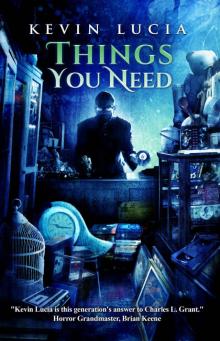 Things You Need
Things You Need A Night At Old Webb
A Night At Old Webb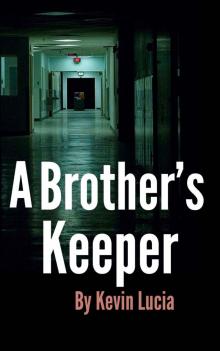 A Brother's Keeper: A Clifton Heights Tale
A Brother's Keeper: A Clifton Heights Tale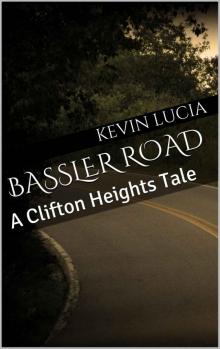 Bassler Road: A Clifton Heights Tale
Bassler Road: A Clifton Heights Tale Hiram Grange & The Chosen One
Hiram Grange & The Chosen One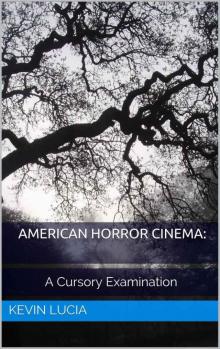 American Horror Cinema
American Horror Cinema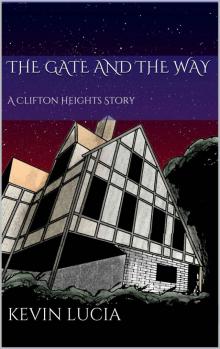 The Gate and the Way: A Clifton Heights Story
The Gate and the Way: A Clifton Heights Story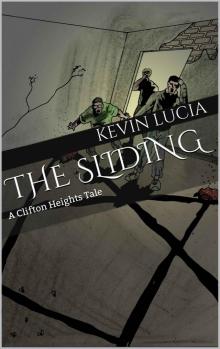 The Sliding: A Clifton Heights Tale
The Sliding: A Clifton Heights Tale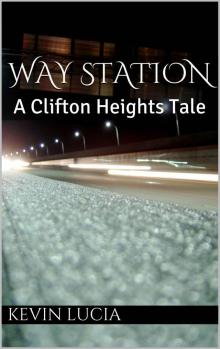 Way Station: A Clifton Heights Tale
Way Station: A Clifton Heights Tale